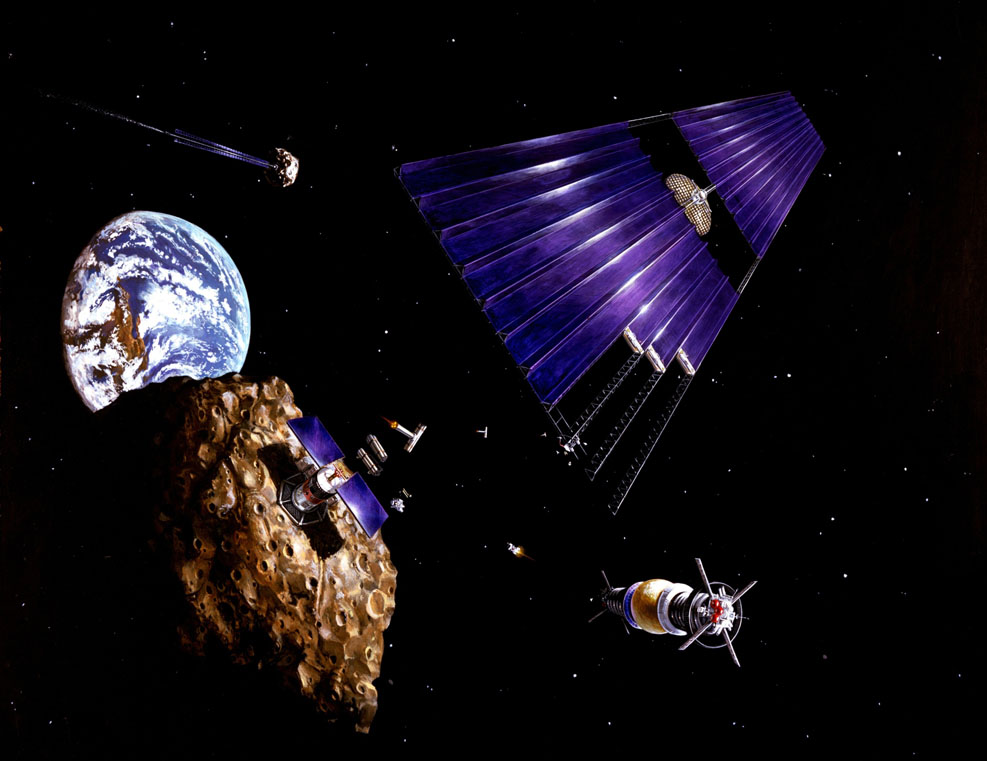Trend One: Civilian Space Tourism
It’s already happening. Some entrants into the growing business of civilian space tourism have included Virgin Galactic, Space Adventures Ltd., The Space Island Group, and SpaceX, founded by Elon Musk, the entrepreneur who launched Tesla Motors.
There is little doubt that widespread civilian space travel and tourism are going to happen – it is only a question of when. In one remarkable breakthrough, SpaceX was recently able to successfully launch a rocket into space and return it safely to land on Earth. If that technology becomes common, maintaining and upgrading rockets is sure to become a profitable business. If and when, the demand for gold and other precious metals that are used in advanced aeronautics is sure to increase.
Trend Two: Mining of Precious Metals on Asteroids and Planets
Scientists and profiteers are already buzzing about the possibility of sending mining craft to asteroids and other planets where they can extract precious metals and bring them back home. Although mining in space is not going to happen in the near term, it could well become commonplace in the decades ahead.
What metals can be found on asteroids and other planets? The short answer is that all the precious metals that are found on Earth can be found in outer space, especially platinum group metals. Scientists are talking about gold, iridium, osmium, palladium, platinum, rhenium, rhodium, silver, titanium and tungsten. Plus, there is a very good chance that the rare earth elements that are needed to make cellphone and other displays can be found in outer space. We need to remember that in the early years of space-based mining, the cost of metals obtained would be very high.
How will these explorations affect the value of precious metals? It is hard to predict. But if, say, the quantity of the world’s available gold doubled, that could signal big changes in gold prices.
Trend Three: Recycling Satellites
In the past, “dead” communication and other satellites have been left to simply stay in orbit, or allowed to burn up in the atmosphere as they fell back toward Earth. There are strong indications that is about to change, as new technologies will make it possible to retrieve defunct satellites and bring them back home for processing, retrofitting and recycling. Remember, those satellites often contain gold, silver, platinum and other precious metals.
And One More Trend to Consider: The Coming Age of Environmentally Respectful Aircraft
This is a trend that pertains not to outer space per se, but to aeronautics in general. NASA’s Armstrong Flight Research Center is already developing airplanes which, like today’s hybrid cars, will burn a lot less fossil fuel than today’s jet planes. One design being tested is kind of like a hybrid car – when a plane reaches altitude, electrically powered propellers will take over and the jet engines will go to sleep.
Planes like that will save jet fuel and protect the environment. If they become available, it’s a pretty safe bet that commercial airlines will be scrapping tens of thousands of older jet airliners. And as you know, jetliners contain a lot of gold, silver, platinum and other precious metals.
New Frontiers Are Opening
Those are only four trends that should impact on the availability and pricing in the years to come. Again, today’s post is more of a “think piece” about the future of precious metals than it is an “advice piece” about precious metals investments you can run out and make right now.
But we think you will agree that the future looks very interesting and bright for all of us who are interested in profiting from precious metals.
Related Posts:
Why Big Dollars Can Be Found in Scrap Aerospace Parts
Easy-to-Miss Places where Platinum-Plated Metals Can Be Found
Three Reasons Smart Platinum Investors Are Making a Fortune Today
What Are the Platinum Group Metals?

